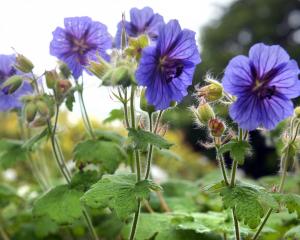
Lichens are not just one organism but two or more organisms living together in a symbiotic relationship. In this mutually beneficial agreement the photobiont (algae and/or cyanobacteria) provides the mycobiont (fungi) with nutrients via photosynthesis. In return, the mycobiont absorbs moisture and provides the photobiont with shelter, minerals and sometimes protective sunscreen. Together they can grow in various, even harsh, conditions and habitats, beyond the limits of other plants.
There's a common misconception that lichens are harmful to trees; this is not the case. Lichens shallowly attach themselves or perch upon the bark of trees; they are not parasitic. The presence of lichen on healthy trees should be welcomed: studies show that the greater variety of species present, the greater the air quality. More than 100 different species of lichen grow in the botanic garden, a great showcase for Dunedin's clean air!
Globally, there are about 20,000 known lichens. New Zealand has an exceptionally rich lichen flora, at about 2000 species. They are a food source for many native and introduced invertebrates, which, in turn, provide food for birds. Lichens are also used to produce antibiotics and dyes.
Lichens are typically the first organisms to colonise bare rock, a pioneer species and the initiator of the soil-production process.
Garden Life is produced by Dunedin Botanic Garden. For further information contact Stephanie Sinton.












